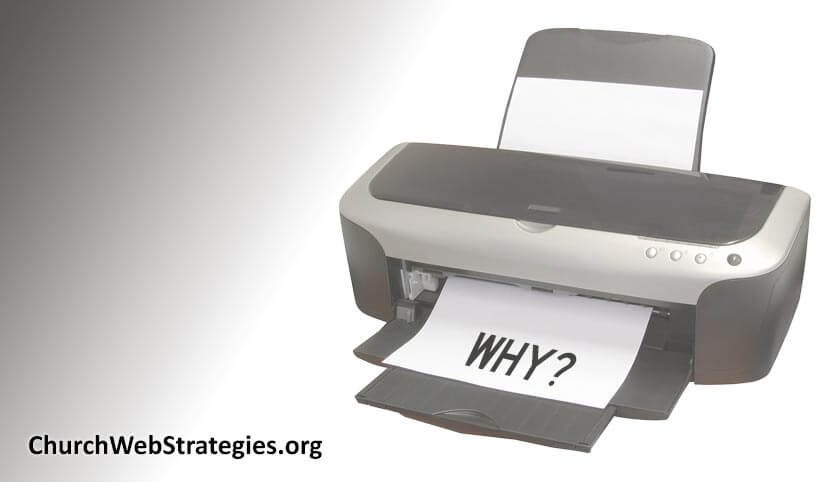Believe it or not, people still print website content. Does your church website account for this? If not, there are specific techniques that when applied to targeted areas of your site; will provide your audience easier offline consumption as well as sharing your information with others.
For my readers that have more strategic and/or leadership roles, you cannot take a break this week. Although this is a slightly more technical article that gets further into the weeds, you should stick around. You just might learn something, or at least impress your friends with some new buzz words and knowledge.
Modern web pages have their styles controlled by a separate file called a cascading style sheet (CSS). This file contains information about page layout, the size, color, and style of text; even images, backgrounds, and other stylistic elements that make up the page. It is basically a clean way to control the way the a site looks from one location. Since every page on your site can reference the same file; you change one file, you change the entire site. Pretty slick, I know!
How does this play into printing out content? You can create a separate style sheet that controls how your site displays specifically for print. The areas you should focus on are:
Page Layout
Your print style sheet should have a simplified layout without any extras. Although you think things like ads are important, this is only true on the website itself. You cannot earn any revenue if someone sees your printed ads, nor can they click on them to earn you any affiliate income. In fact, nearly everything that is clickable is pretty obsolete when it comes to a printed piece of paper. This includes navigational elements, social media icons, and links to related pages. What should be focused on? A print-optimized logo, the name of the page, mandatory branding elements, and the content itself. I know you are not happy with this, but people who print your web pages will be.
Images
If you could not tell from the previous paragraph, this next one will include some advice on pruning back what you include on printed layouts. First, get rid of any background images or colors. They will not help your customers read the page, and despite color differences, a black and white printout will look very cluttered. Secondly, only include the regular page images if they are relevant to the content. If it is an article highlighting a mission trip that includes images of people accomplishing tasks; keep it.
Fonts
The font that you use for your website is probably optimized for on-screen viewing. Realize that this may not be the best solution for a print viewing. With a change to your CSS, you can easily switch to a font that is better optimized for paper. It is a small change that can drastically change the ease in which your audience can read your content.
Action Item
Think about your website as a whole and create some general print style guides. Next, consider what pages your users are most likely to print and optimize them for that medium. They are the ones most likely to be printed for your user’s offline reading, or to be handed to another person for their consumption. Lastly, think about context. Is the page going to be read on someone’s couch (such as a sermon summary) or in a car (driving directions). Font size and scanability should differ based on context.
Photo courtesy of Davide Guglielmo

